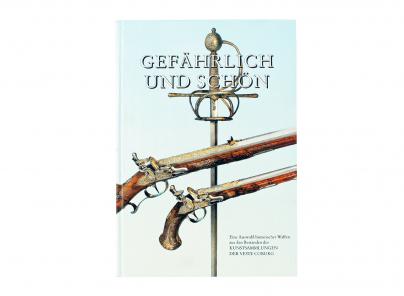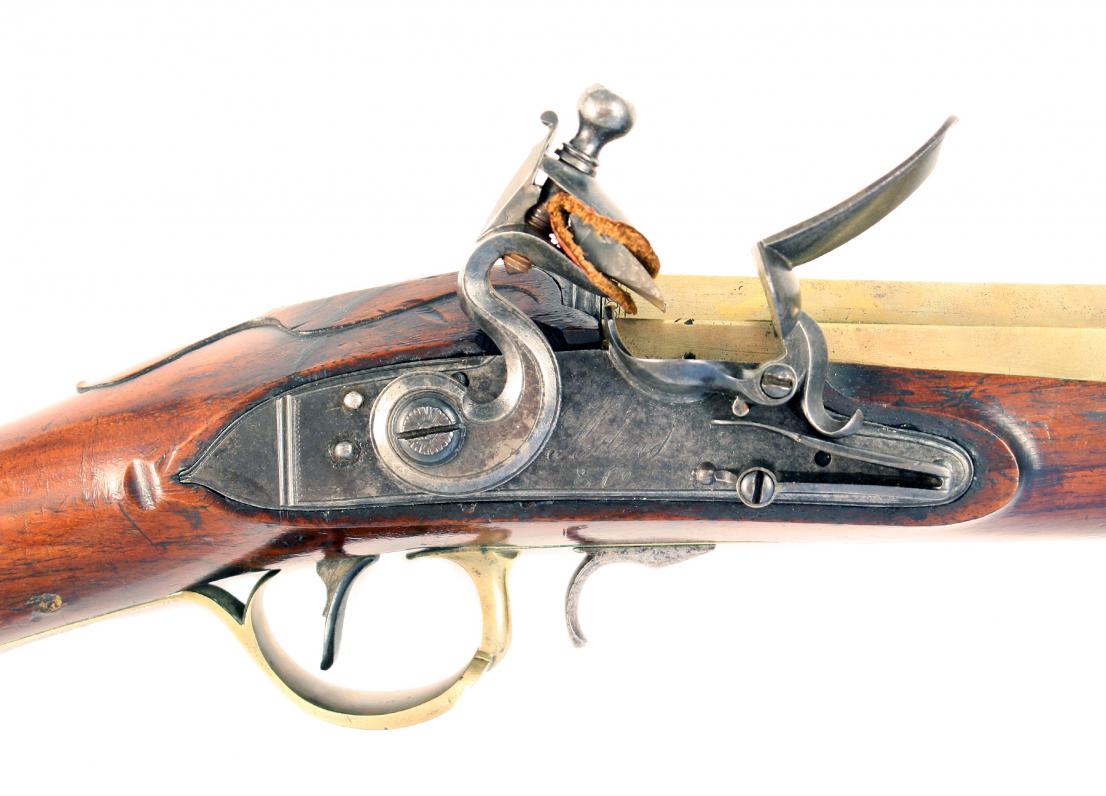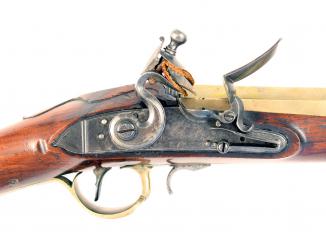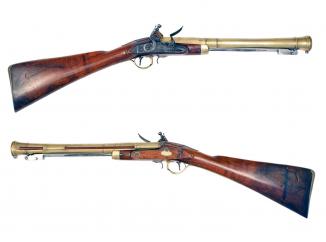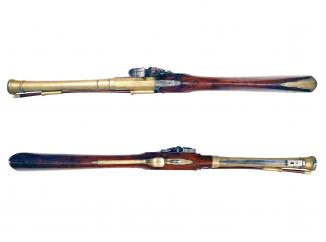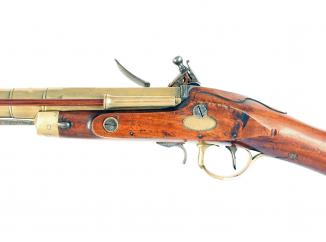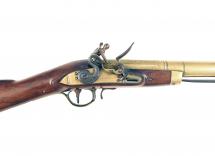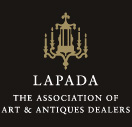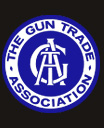A Good Flintlock Blunderbuss by Ketland
A Good Flintlock Blunderbuss by Ketland & Co. With belled three-stage octagonal to round barrel, fitted with sprung bayonet underneath, engraved steel tang, stepped bevelled lock, signed Ketland & Co. below the pan, half-stocked in walnut, engraved brass mounts comprising butt plate engraved with birds and foliage, trigger guard decorated with foliage on the bow, extended trigger guard with acanthus leaf finial and bayonet release catch, ramrod fitted to the side of the barrel.
Ketland [1740-1804]
William Ketland, Sr., established a gunsmithy at Birmingham in 1740, and after his death his eldest grandson, William Ketland, carried on the business until his death in 1804. During this period they operated under the name of Ketland & Co. It is not definitely known when they opened the London shop but it is believed to be about 1760, and were one of the first birmingham gunmakers to compete with London gunmakers of fine workmanship. The Ketlands arms mark later developed into the Birmingham Proof Mark. William Ketland II's brother-in-law, Thomas Izon continued to operate the company under the name Ketland & Co. until 1831, when they got into financial difficulties and the firm ceased operations.
William Ketalns, Sr., had two other grandsons, Thomas and John Ketland, both gunsmiths who worked on a co-operative basis with William Ketland under the name Ketalnd & Co. However, Thomas and John emigrated foto the USA in 1780. A number of American Kentucky rifles had Ketalnd & Co locks.
Ketland & Co flintlock pistols and fowling pieces are noted for their fine workmanship and design.
A. Merwyn Carey (1954) English, Irish and Scottish Firearms Makers, Acro Publishing Company, New York.
Dimensions:
Bore: N/A
Barrel Length: 15 Inches (38.10 cm)
Overall Length: 31 Inches (78.74 cm)








